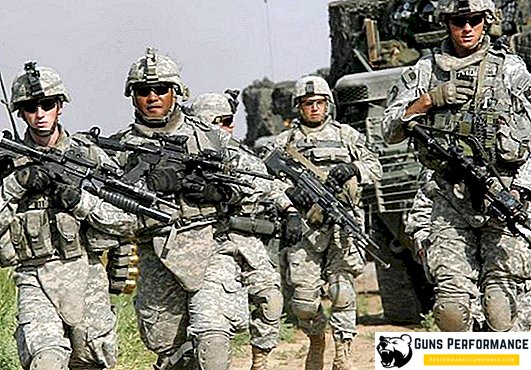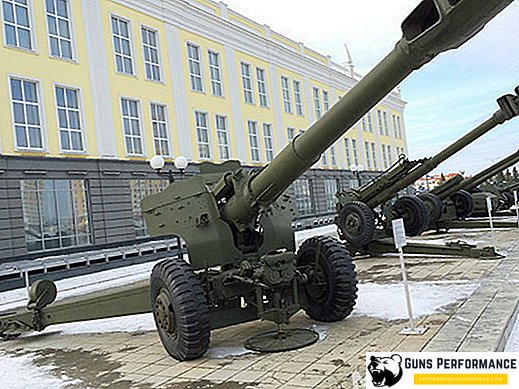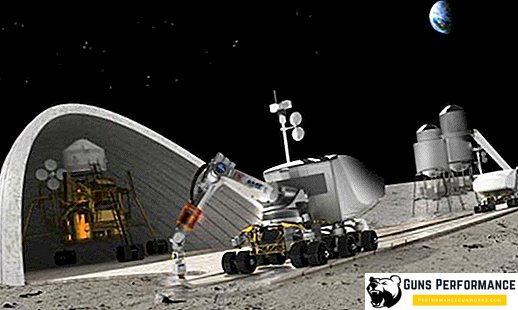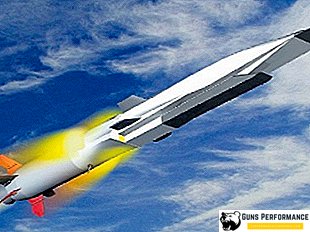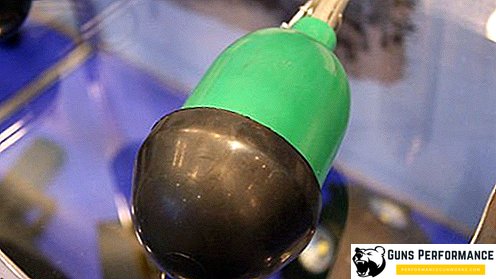Cumulative ammunition is a special type of projectiles, rockets, mines, hand grenades and grenades for grenade launchers, designed to destroy the enemy's armored vehicles and its reinforced concrete fortifications. The principle of their operation is based on the formation after the explosion of a thin, narrowly directed cumulative jet that burns through the armor. The cumulative effect is achieved due to the special design of ammunition.
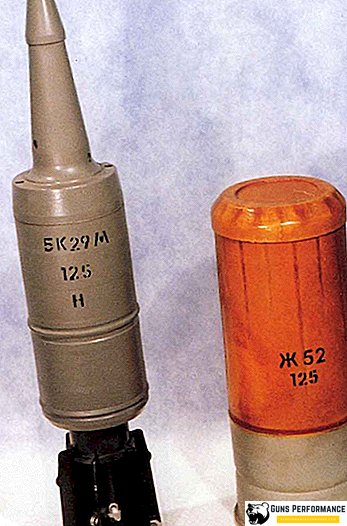
Currently, cumulative ammunition is the most common and most effective anti-tank weapon. The massive use of similar munitions began during World War II.
Widespread cumulative ammunition contributes to their simplicity, low cost and unusually high efficiency.
A bit of history
From the moment tanks appeared on the battlefield, the question immediately arose about effective means of dealing with them. The idea of using artillery guns to destroy armored monsters appeared almost immediately, guns began to be widely used for this purpose during the First World War. It should be noted that the idea to create a specialized anti-tank gun (VET) first occurred to the Germans, but they could not immediately implement it. Until the very end of the First World War, the most common field guns were used very successfully against tanks.

In the interval between the two global slaughterhouses, the development of specialized anti-tank artillery was carried out in almost all the major military-industrial powers. The result of this work was the emergence of a large number of VET samples, which quite successfully hit the tanks of that time.
Since the armor of the first tanks protected mainly from bullets, even a small caliber gun or an anti-tank gun could cope with it. However, before the war in different countries began to appear the next generation of machines (the British "Matilda", the Soviet T-34 and KV, the French S-35 and Char B1), equipped with a powerful engine and anti-curb armor. This defense of the first-generation VET could not be penetrated.
As a counter to the new threat, the designers began to increase the caliber of VET and increase the initial velocity of the projectile. Such measures several times increased the effectiveness of armor penetration, but also had significant side effects. The guns became heavier, harder, their cost increased and maneuverability sharply decreased. The Germans did not use the good life against the Soviet T-34s and the KV 88-mm anti-aircraft guns. But not always they could be applied.
It was necessary to look for another way, and it was found. Instead of increasing the mass and speed of the armor-piercing blanks, ammunition was created, which provided armor penetration due to the energy of a directional explosion. Such munitions are called cumulative.
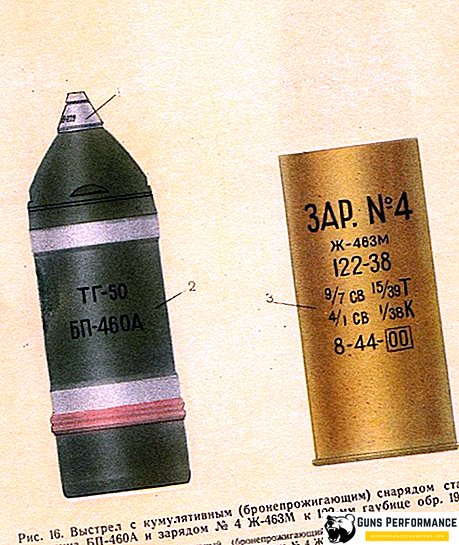
Research in the field of directional explosion began in the middle of the XIX century. On the laurels of the cumulative effect pioneer claim several people in different countries who were engaged in work in this direction at about the same time. Initially, the effect of a directional explosion was achieved through the use of a special cone-shaped notch, which was made in an explosive charge.
The works were carried out in many countries, but the Germans were the first to achieve practical results. Talented German designer Franz Tomanek suggested using a metal lining of the recess, which made the shaped charge even more efficient. In Germany, these works began in the mid-1930s, and by the beginning of the war, the cumulative projectile was already in service with the German army.
In 1940, on the other side of the Atlantic, the Swiss designer Henry Mohaupt created a rocket grenade with a cumulative warhead for the US Army.
At the beginning of the war, Soviet tankers faced a new type of German ammunition, which became a very unpleasant surprise for them. German cumulative shells burned tank armor when hit and left holes with melted edges. Therefore, they were called "armor-burning".

However, in 1942 the cumulative projectile BP-350A appeared in service with the Red Army. Soviet engineers copied German trophy samples and created a cumulative projectile for a 76-mm cannon and a 122-mm howitzer.
In 1943, the Red Army received the anti-tank cluster anti-tank bombs PTAB, which were intended to destroy the upper projection of the tank, where the thickness of armor is always less.
Also in 1943, the Americans first used the Bazooka anti-tank grenade launcher. He was able to pierce 80 mm armor at a distance of 300 meters. The Germans with great interest studied the trophy samples "Bazook", soon came to light a whole series of German grenade launchers, which we traditionally called "Faustpatronami." The effectiveness of their use against Soviet armored vehicles is still a very controversial issue: in some sources, the Faustpatrons are called almost a real “miracle weapon”, and in others they rightly point to their low firing range and poor accuracy.
German grenade launchers were indeed very effective in the conditions of urban combat, when the grenade launcher could fire at close range. In other circumstances, to get to the tank at a distance of an effective shot, he did not have many chances.
Also, the Germans developed special anti-tank magnetic cumulative mines Hafthohlladung 3. Using the "dead space" around the tank, the fighter had to get close to the car and strengthen the mine on any smooth surface. Such mines pierced tank armor quite effectively, but getting close to the tank and installing a mine was a very difficult task, it required a huge courage and endurance from the soldier.
In 1943, in the USSR, several hand-held cumulative grenades were developed, which were intended to destroy enemy armored vehicles at short distances.
During the war, the development of the RPG-1 anti-tank grenade began, which became the pioneers of the whole family of these weapons. Today, RPG grenade launchers are a true global brand that are not inferior in recognition to the famous AK-47.
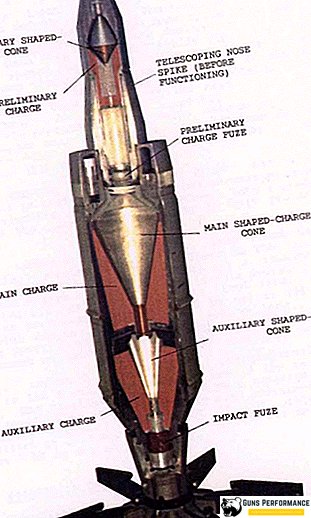
After the end of the war, work on the creation of new cumulative munitions was continued immediately in many countries of the world, theoretical studies were conducted in the field of directed explosions. Today, the cumulative warhead is traditional for grenade anti-tank grenade launchers, anti-tank systems, aviation anti-tank ammunition, tank shells, anti-tank mines. The protection of armored vehicles is constantly improving, and the means of destruction are not far behind. However, the structure and principle of operation of such ammunition has not changed.
Cumulative projectile: principle of operation
The cumulative effect means the strengthening of the action of a process through the addition of effort. This definition very accurately reflects the principle of the cumulative effect.
In the warhead of the charge is a funnel-shaped recess, which is lined with a layer of metal with a thickness of one or several millimeters. This funnel is angled wide towards the target.
After the detonation, which occurs at the sharp edge of the funnel, the blast wave propagates to the side walls of the cone and collapses them to the axis of the munition. When an explosion creates a huge pressure, which turns the cladding metal into quasi-fluid and under enormous pressure moves it forward along the axis of the projectile. Thus, a metal jet is formed, which moves forward with hypersonic speed (10 km / s).
It should be noted that while the metal cladding does not melt in the traditional sense of the word, but is deformed (turns into liquid) under enormous pressure.
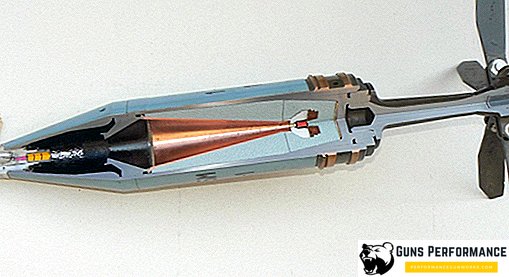
When the metal jet enters the armor, the strength of the latter does not matter. Its density and thickness are important. The penetration ability of a cumulative jet depends on its length, the density of the cladding material and the material of the armor. The maximum penetrating effect occurs when an ammunition explodes at a certain distance from the armor (it is called focal).
The interaction of armor and cumulative jet occurs according to the laws of hydrodynamics, that is, the pressure is so great that the strongest tank armor behaves like a liquid when hit by a jet. Usually cumulative ammunition can penetrate armor, the thickness of which is from five to eight of its calibers. When facing from depleted uranium, the armor-piercing effect increases to ten calibers.
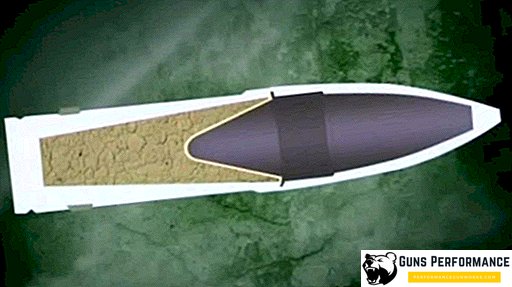
Advantages and disadvantages of cumulative ammunition
Such ammunition has both strengths and weaknesses. Their undoubted advantages include the following:
- high armor-piercing;
- armor penetration does not depend on the speed of the ammunition;
- powerful armored action.
In caliber and sub-caliber shells, armor penetration is directly related to their speed, the higher it is, the better. That is why for their use artillery systems are used. For cumulative ammunition, the speed does not matter: the cumulative jet is formed at any speed of collision with the target. Therefore, a cumulative warhead is an ideal tool for grenade launchers, recoilless guns and anti-tank missiles, bombs and mines. Moreover, too high a projectile speed does not allow a cumulative jet to form.
Hitting a cumulative projectile or grenade in a tank often leads to an explosion of the vehicle’s ammunition and completely disables it. The crew thus has almost no chance of salvation.
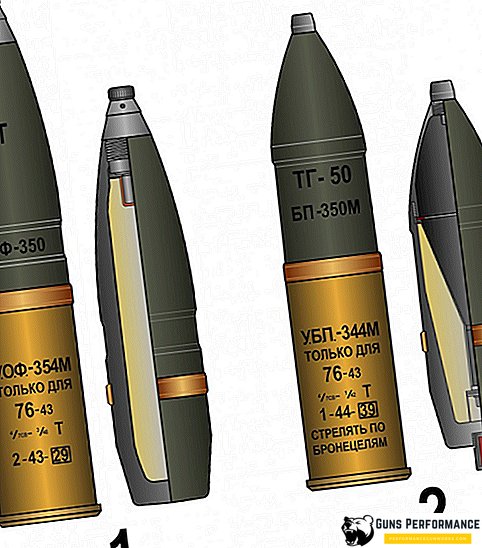
Cumulative ammunition has a very high armor-piercing. Some modern anti-tank systems punch homogeneous armor with a thickness of more than 1000 mm.
Disadvantages of cumulative ammunition:
- quite high manufacturing complexity;
- complexity of use for artillery systems;
- vulnerability to dynamic protection.
Shells rifled guns stabilized in flight due to rotation. However, the centrifugal force that arises in this case destroys the cumulative jet. Invented various "tricks" in order to circumvent this problem. For example, in some French ammunition only the body of the projectile rotates, and its cumulative part is mounted on bearings and remains stationary. But almost all solutions to this problem significantly complicate ammunition.
Ammunition for smooth-bore guns, on the contrary, have too high speed, which is insufficient for focusing the cumulative jet.
That is why ammunition with cumulative warheads is more characteristic of low-speed or stationary ammunition (anti-tank mines).
There is a fairly simple defense against such munitions - a cumulative jet is dissipated by a small counter-explosion that occurs on the surface of the machine. This is the so-called dynamic protection, today this method is applied very widely.
To penetrate the dynamic defense, a tandem cumulative warhead is used, which consists of two charges: the first removes the dynamic protection and the second penetrates the main armor.
Today, there are cumulative ammunition with two and three charges.


